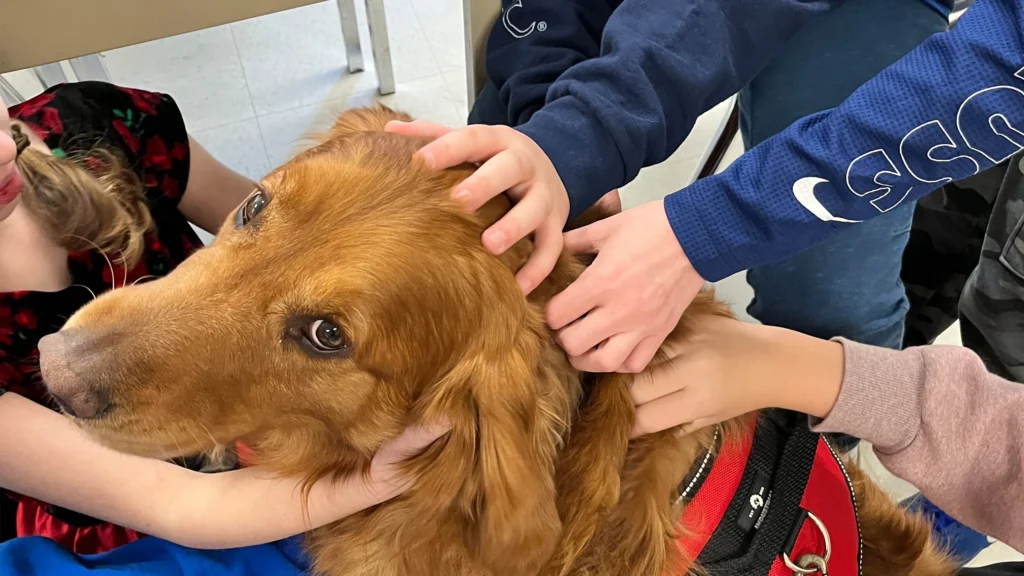In recent years, the use of therapy animals—particularly dogs—has gained significant popularity as a tool to support mental health, especially among schoolchildren. As educational institutions seek innovative ways to combat rising levels of anxiety, depression, and emotional distress, the presence of therapy dogs has emerged as a promising solution. However, as this trend expands, experts warn that the current regulatory frameworks are insufficient to ensure the safety, well-being, and effective integration of therapy dogs in school environments. This article examines the benefits of therapy dogs for students, traces their historical roots, and explores the current landscape, highlighting the urgent need for improved regulation.
The Historical Roots of Animal-Assisted Therapy
Animal-assisted therapy (AAT) is not a novel concept. Its origins date back centuries, reflecting a longstanding human-animal bond that has been harnessed for healing and comfort. In the late 18th century, England’s Quaker York Retreat utilized rabbits and poultry to promote mental well-being among patients. These early efforts laid the groundwork for modern animal-assisted interventions.
Fast forward to the early 20th century, where renowned psychoanalyst Sigmund Freud incorporated his pet chow chow, Jofi, into his therapeutic sessions. Freud believed that animals could facilitate emotional expression and provide comfort to his patients. Similarly, Florence Nightingale, often regarded as the founder of modern nursing, emphasized the therapeutic value of animals, stating in 1859 that “a small pet animal is often an excellent companion for the sick.” These historical examples underscore the enduring human recognition of animals’ therapeutic potential.
Today, therapy dogs are widely recognized in hospitals, courthouses, nursing homes, and are increasingly being used in educational settings. Their role has evolved from simple companionship to a strategic intervention aimed at reducing emotional distress and enhancing social-emotional skills.
The Science Behind Therapy Dogs and Student Well-being
Recent research highlights the multifaceted benefits of therapy animals for students. A growing body of evidence suggests that therapy dogs can:
Reduce Anxiety and Stress: Physical contact with dogs triggers the release of oxytocin, which in turn reduces cortisol levels, leading to a decrease in anxiety. Dr. Clare Watsford, a clinical psychologist at the University of Canberra, notes that “the act of physically touching an animal helps reduce stress and anxiety, and is a handy form of self-soothing.”
Improve Mood and Engagement: Students often experience mood boosts in the presence of therapy dogs, which can translate into better focus and increased participation in classroom activities.
Enhance Communication Skills and Confidence: Interacting with therapy dogs encourages social interaction, especially for students with social anxiety or communication difficulties. The non-judgmental nature of animals can help shy students feel more comfortable expressing themselves.
Support Attendance and Emotional Stability: For students struggling with attendance due to emotional distress, therapy dogs can serve as a comforting presence that fosters a sense of safety and belonging, encouraging consistent school participation.
These benefits are supported by studies published in educational and psychological journals, indicating that therapy dogs can be a valuable addition to mental health strategies within schools.
The Growing Popularity of Therapy Dogs in Schools
As awareness of these benefits spreads, more schools are integrating therapy dogs into their mental health programs. Some institutions have dedicated therapy dog visits during exam periods to help students manage stress. Others have established “dog-friendly” spaces where students can spend time with trained therapy dogs as a calming activity.
Several factors drive this expansion:
Increasing Student Anxiety: Surveys indicate that anxiety levels among students are rising globally, driven by academic pressures, social challenges, and external stressors such as the COVID-19 pandemic.
Recognition of Mental Health Needs: Schools are increasingly acknowledging mental health as a crucial component of student success, prompting innovative approaches such as animal-assisted interventions.
Cost-Effective and Non-Invasive: Compared to medication or more resource-intensive therapies, therapy dogs provide a low-cost, accessible option for emotional support.
Despite these positives, the rapid growth of therapy dog programs in schools has highlighted gaps in regulation and oversight, raising concerns among educators, mental health professionals, and animal welfare advocates.
Challenges and Risks: The Call for Better Regulation
While therapy dogs offer promising benefits, their integration into school environments presents challenges. Experts warn that the lack of standardized regulations can lead to issues such as:
Inconsistent Standards for Therapy Dog Training: Not all therapy dogs are trained to the same standards, which can impact their behavior and safety in school settings. Without clear guidelines, there’s a risk of dogs exhibiting unpredictable or aggressive behavior.
Insufficient Screening of Handler Compatibility: The effectiveness of therapy dog programs depends heavily on the handler’s ability to manage the dog and interpret its signals. Poorly trained handlers can inadvertently create stressful or unsafe situations.
Animal Welfare Concerns: The welfare of therapy dogs is of paramount importance. Overexposure, inadequate rest, or stressful environments can harm the animals and undermine the therapeutic process.
Health and Safety Protocols: Schools often lack standardized protocols for hygiene, allergy management, and emergency response related to therapy dogs.
Liability and Legal Issues: Without clear legal frameworks, schools and handlers may face liability issues should accidents or injuries occur.
Given these challenges, experts advocate for comprehensive regulation that establishes clear standards for training, certification, handler qualifications, and operational procedures. Such regulation would safeguard the well-being of both students and animals, ensuring that therapy dog programs are effective, ethical, and sustainable.
International Perspectives and Best Practices
Several countries and organizations have begun implementing regulatory frameworks for therapy animals, serving as models for best practices:
United States: The Pet Partners organization certifies therapy animals through rigorous training and evaluation. Many states have laws governing the use of therapy animals in public settings, including schools. Locally, in Alaska and the Pacific Northwest, Dog Works Training Company trains therapy dog teams.
United Kingdom: The Association of Pet Dog Trainers (APDT) and other organizations set standards for therapy dog training and certification. Schools are encouraged to partner with registered therapy dog organizations.
Australia: The Delta Society and other groups provide training guidelines that emphasize animal welfare and handler competence.
These models emphasize standardized training, ongoing assessment, and legal compliance, which could serve as templates for expanding regulation globally.
Moving Forward: Recommendations for Effective Regulation
To maximize the benefits of therapy dogs in schools while mitigating risks, stakeholders should consider the following recommendations:
Establish Clear Certification and Training Standards: Certification should include assessments of the dog’s behavior, temperament, and health, as well as the handler’s competence.
Develop Standard Operating Procedures: Schools should implement protocols covering hygiene, allergy management, emergency response, and visiting schedules.
Ensure Animal Welfare: Regular health checks, adequate rest periods, and monitoring of the dog’s stress levels are essential.
Provide Staff Training: Educators and handlers should receive training in animal behavior, safety protocols, and effective student engagement strategies.
Implement Evaluation and Feedback Mechanisms: Continuous assessment of program effectiveness and safety should inform ongoing improvements.
Legal and Liability Frameworks: Clear policies should delineate responsibilities, liability, and consent procedures involving students, parents, and staff.
By adopting these measures, schools can create a safe, effective environment where therapy dogs can truly enhance student well-being.
Conclusion
Therapy dogs have proven to be a powerful tool in alleviating anxiety and promoting emotional resilience among students. Their long-standing history and growing body of scientific evidence underscore their value in educational settings. However, as their popularity continues to rise, so too does the necessity for robust regulation to protect all parties involved.
Implementing standardized training, certification, and operational procedures will ensure that therapy dog programs are safe, ethical, and effective. As educators, policymakers, and mental health professionals collaborate to develop these frameworks, they will pave the way for a more sustainable and impactful use of therapy animals in schools.
Ultimately, harnessing the therapeutic potential of dogs responsibly can help create nurturing environments where students feel supported, confident, and ready to thrive academically and emotionally.
References
Watsford, Clare. (2023). The Role of Therapy Dogs in Reducing Student Anxiety. University of Canberra.
Nightingale, Florence. (1859). Notes on Nursing: What It Is and What It Is Not.
National Institute of Mental Health. (2022). Statistics on Student Anxiety and Depression.
Pet Partners. (2023). Certification Standards for Therapy Animals.
British Small Animal Veterinary Association. (2023). Guidelines on Therapy Animal Welfare.
We offer a FREE Strategy Call.
Click on the graphic to learn more
Read More

Brazilian Terrier: The Energetic and Intelligent Companion for Active Families

Discovering the Manchester Terrier: A Loyal Companion with a Rich History








